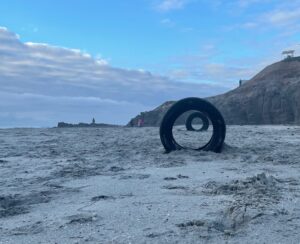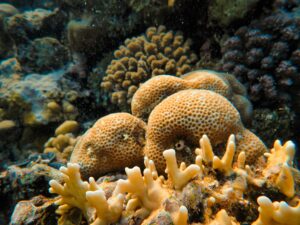Greece bans bottom trawling in all Marine Protected Areas
Greece has pledged to ban bottom trawling, "the single greatest threat to marine habitats", in all of its Marine Protected Areas by 2030. The country also committed to protecting 30% of its oceans by 2030.
Greek Prime Minister Kyriakos Mitsotakis announced at the recently held Our Ocean Conference a historic ban on bottom trawling in the country’s Marine Protected Areas (MPAs). The country will end the damaging practice in its three national marine parks, one of which will be the largest in the East Mediterranean Sea, by 2026 and across all of its protected ocean areas by 2030.
By doing so, Greece becomes the first on the continent to ban bottom trawling, which involves dragging heavy fishing nets across the ocean floor, destroying habitats and releasing carbon into the ocean and the atmosphere. While some restrictions on the practice exist throughout Europe, Greece’s announcement embodies the first outright ban on bottom trawling in all of one country’s Marine Protected Areas.
“This is a historic moment for conservation in Greece. We are deploying 780 million euros to protect our diverse and unique marine ecosystems,” said Mitsotakis and added: “We are increasing the size of our marine protected areas by 80 per cent, banning harmful fishing practices and using new technologies to monitor and enforce the commitments we make here.”
In addition to banning bottom trawling, the country also committed to protecting two large swathes of the Aegean and Ionian seas, creating the Ionian Marine National Park and the South Aegean Marine Protected Area (MPA). The Ionian Marine National Par covers about 11.72% of Greek territorial waters, and will safeguard important sea mammals like sperm whales, Cuvier’s beaked whales, striped dolphins and endangered monk seals. The South Aegean MPA, an important habitat for seabirds, will cover 6.61% of Greek territorial waters.
Greece further committed to an overall goal of protecting 30% of its ocean area by 2030, of which 10% will be strictly protected, which means no damaging activities are permitted. Additional commitments include the intention to use high-tech tools to monitor MPAs and study the movement of sea turtles to better understand how to protect them. The country is also addressing plastic pollution, shipping and more.


Greece’s announcements come as the world gears up to protect 30% of the ocean by 2030. Currently, only 8% of the ocean is protected, with only 3% fully protected against damaging activities. Studies show that strictly protected areas deliver more benefits than those that allow bottom trawling, fishing and other activities that can damage the seafloor and sea life.
Enric Sala, the founder of Pristine Seas, National Geographic Explorer in Residence and author of The Nature of Nature, commented on the news: “This historic move – a first for Europe – brings the country one step closer to ensuring that its marine protected areas can deliver the full potential of their benefits, which range from protecting biodiversity and storing carbon to boosting the tourism and fishing industries.”
He added: “The ocean floor is the world’s largest carbon storehouse. Leaving the seabed undisturbed is critical to global efforts to curb the climate crisis. Countries that are serious about keeping global temperatures at bay, conserving biodiversity and keeping their fishing industries vibrant must join Greece in ending this outdated practice in MPAs.”
For more from our Ocean Newsroom, click here.


"*" indicates required fields
Printed editions
Current issue
Back issues

Back Issues
Issue 43 Sir David Attenborough’s ‘Ocean’

Back Issues
Issue 41 Holdfast to the canopy
Enjoy so much more from Oceanographic Magazine by becoming a subscriber.
A range of subscription options are available.









